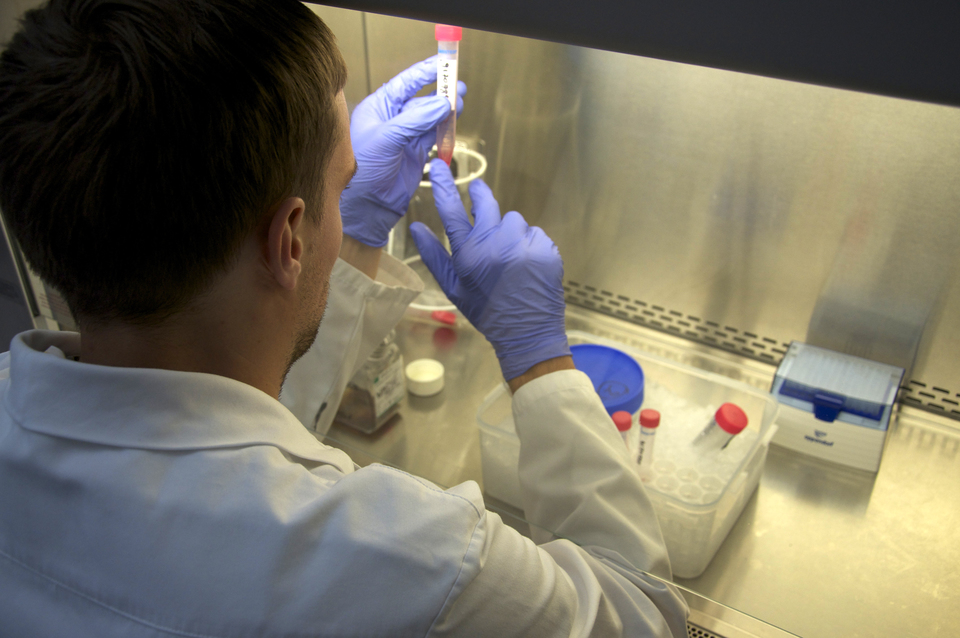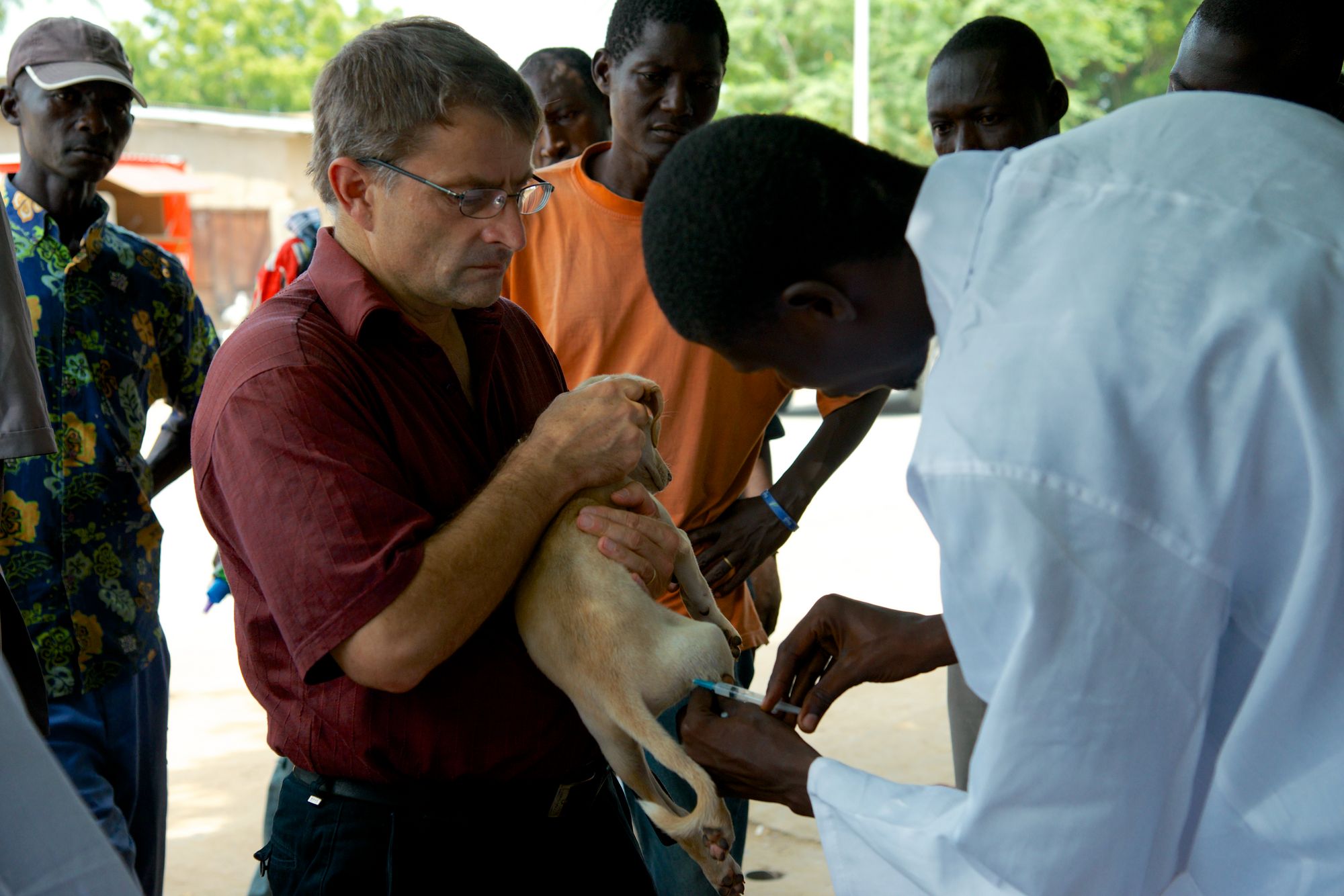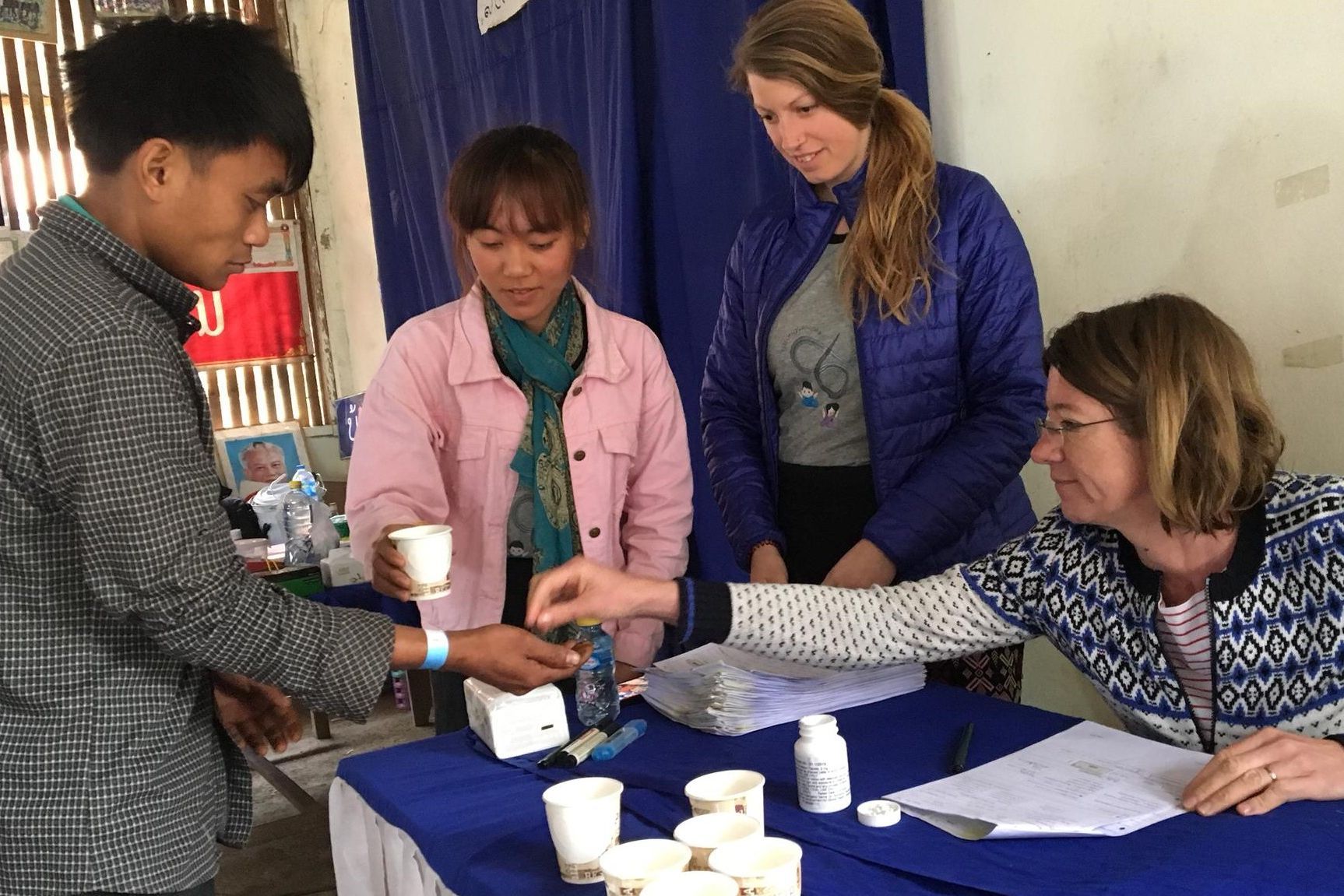

Neglected Tropical Diseases
Neglected tropical diseases (NTDs) are a diverse group of conditions caused by a range of viruses, bacteria, parasites, fungi and toxins. They primarily affect impoverished communities in tropical and subtropical regions, resulting in severe health and economic burdens. More than 1 billion people live with NTDs, and 1.6 billion need treatment or prevention. Many NTDs have complex transmission patterns involving insect vectors, animal hosts or complicated life cycles, making them difficult to control. Nevertheless, global efforts are driving progress towards reducing their impact and improving health equity.
At Swiss TPH, we are committed to fighting NTDs through cutting-edge research, training and practical solutions. Our experts focus on diseases such as Buruli ulcer, Chagas disease, sleeping sickness (human African trypanosomiasis), leishmaniasis, leprosy, rabies, schistosomiasis and soil-transmitted helminths. Through our work, we directly contribute to the achievement of Sustainable Development Goal (SDG) 3: Health and well-being, particularly in low-resource settings.
From Innovation to Impact
Swiss TPH brings together scientific research, training and on-the-ground implementation to develop and apply effective solutions to control and eliminate NTDs. Our work spans the entire value chain:
- Developing new treatments for parasitic infections, including helminths and protozoa
- Modelling disease transmission to inform strategic planning and interventions
- Validating new tools to diagnose, treat and prevent NTDs such as leprosy, rabies and schistosomiasis
- Strengthening health systems and enhancing capacity through training, health education and technical support
- Promoting equity in health care, ensuring that communities in need receive accessible and effective treatment
- Offering technical assistance, policy advice and programme evaluation services
With this comprehensive approach, we ensure that research translates into effective, scalable, and sustainable solutions for tackling NTDs globally.
Leading research and fieldwork in challenging environments
Swiss TPH has extensive experience in conducting clinical trials, diagnostic research and long-term intervention studies in resource-limited settings. We specialise in sustainable strategies for the control and elimination of NTDs, in particular intestinal helminth infections and schistosomiasis. Our current regions of focus include East, Central and West Africa, South and South-East Asia and Latin America, where we partner with local academic institutions and NGOs to ensure sustainable, community-driven impact.
Through our multidisciplinary expertise in research, policy and training, Swiss TPH plays a key role in the global fight against NTDs - helping to create a healthier future for millions of people worldwide.
Our Work Related to NTDs
Parasitic worm infections - Helminthiasis
Swiss TPH plays a leading role in research and controll of parasitic worm infections. Our work includes teaching and training, mapping high-risk areas, developing and evaluating diagnostic tools, and screening new treatments for their efficacy. We also support countries in their national control programmes by providing policy advice and technical expertise. Through these efforts, Swiss TPH contributes to reducing the burden of parasitic infections and improving global health outcomes. Find out more
Buruli ulcer
Buruli ulcer (BU), caused by Mycobacterium ulcerans, is the third most common mycobacterial disease after tuberculosis and leprosy. Predominantly affecting West Africa, this chronic skin infection starts as painless nodules but can lead to severe tissue and bone damage if untreated. While surgery was once the primary treatment, WHO now recommends an antibiotic combination therapy. Our reserach focuses on understanding BU’s pathogenesis, immunology, and transmission, developing early diagnostic tools, and exploring better treatments and vaccine prospects to improve patient outcomes. Read more
Leprosy
Leprosy is an infectious disease caused by Mycobacterium leprae that primarily affects the skin and peripheral nerves. If left untreated, it can lead to loss of sensation and severe disability. Even today, little is known about the transmission of leprosy, and the disease can only be diagnosed symptomatically. Although the WHO declared the global elimination of leprosy as a public health problem in 2000, high endemic areas still persist in many countries. Leprosy control is a challenge for health systems due to the lack of simple biomedical diagnostic tools, the inability to diagnose asymptomatic infections with the potential to cause morbidity, and the need for experienced specialists to diagnose early infections. Read more about our activities
Noma
Noma (cancrum oris) is a gangrenous disease which destroys the soft and hard facial tissues. It predominantly affects children aged 2-6 years living in extreme poverty. With a high mortality rate of up to 90 per cent, noma leaves survivors with significant aesthetic and functional sequelae, suffering intense social isolation, stigmatisation and discrimination. Swiss TPH is co-leading the Noma Project, which aims to improve understanding, prevention, and treatment of noma while addressing its human rights implications. It seeks to establish the disease’s global burden, document survivors’ experiences, and evaluate its classification as a neglected tropical disease and human rights issue to drive action and advocacy. Read more
Human African trypanosomiasis (HAT) - Sleeping sickness
Swiss TPH has been at the forefront of sleeping sickness research since its inception, pioneering the first successful laboratory breeding of tsetse flies. This led to innovative pathogen culture systems and the establishment of a compound screening laboratory. In the late 1990s, Swiss TPH and its partners in the DRC conducted the first modern clinical trial according to international standards. It also played a key role in the development of fexinidazole, the first all-oral treatment for sleeping sickness. Through innovation and collaboration, Swiss TPH remains committed to eliminating this devastating disease. Find out more
Rabies
Rabies is a fatal viral zoonosis that causes tens of thousands of deaths annually, with 40% being children under 15. Transmitted primarily through dog bites ('urban rabies' accounts for 99% of cases), the virus spreads via infected saliva and attacks the nervous system. Once symptoms like aggression, agitation, and hydrophobia appear, the disease is incurable. Post-exposure prophylaxis (PEP) is the only life-saving intervention if administered shortly after exposure. While mass animal vaccination and public education have eliminated rabies in many countries, poverty, lack of transport, and limited awareness continue to hinder control efforts in low-income regions such as Chad. Read more about our work in eliminating rabies
Chagas disease
Chagas disease, or American trypanosomiasis, is a parasitic infection caused by Trypanosoma cruzi, affecting 7 to 8 million people worldwide, primarily in Latin America. It spreads through triatomine bugs, contaminated food, blood transfusions, organ donations, and from mother to child during pregnancy and birth. The disease has an acute phase, often with mild or no symptoms, and a chronic phase, which can develop decades later, leading to cardiovascular, digestive or neurological problems, including arrhythmias and sudden death. Swiss TPH contributes to drug discovery and development, epidemiology, diagnosis and control efforts to combat Chagas disease. Read more



